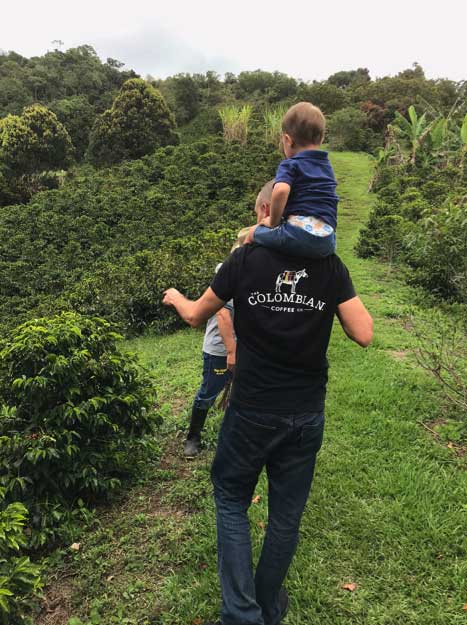Unveiling the Artistry of the Coffee Menu
Embarking on a sensory expedition, we delve into the captivating realm of coffee, where passion meets expertise. As awarded specialty coffee roasters, we invite you

Colombia is well-known for producing some of the best coffee in the world, with unique flavors and aromas that are unmatched by other coffee-producing countries. This is due in large part to the country’s diverse coffee growing regions, each with its own distinct climate, altitude, and soil composition. In this blog post, we’ll explore the differences between the Colombian coffee growing regions and what makes each one unique.
First, it’s important to understand that Colombia is divided into three main coffee growing regions: the Andean region, the Caribbean region, and the Pacific region. Each of these regions has its own unique climate and topography, which affects the taste and quality of the coffee produced there.
The Andean region is perhaps the most well-known of the three coffee growing regions. It is located in the central part of the country and includes areas such as Antioquia, Tolima, and Huila. The Andean region is characterized by high altitudes and a cool, wet climate, which results in a slow maturation process and produces coffee with a bright, acidic flavor and a light body. Coffee from this region is often described as having notes of citrus, berries, and chocolate.
Moving north along the coast, we come to the Caribbean region. This region is located on the northern coast of Colombia and includes areas such as Magdalena, Cesar, and La Guajira. The Caribbean region is characterized by a hot, humid climate and lower altitudes than the Andean region. This results in a faster maturation process and produces coffee with a heavier body and a more mellow flavor profile. Coffee from this region is often described as having notes of caramel, nuts, and spices.
Finally, we come to the Pacific region, which is located on the western coast of Colombia and includes areas such as Nariño, Cauca, and Valle del Cauca. This region is characterized by high altitudes and a warm, wet climate, which results in a slow maturation process and produces coffee with a full body and a strong, complex flavor profile. Coffee from this region is often described as having notes of dark chocolate, berries, and floral aromas.
In addition to these three main regions, there are also smaller coffee growing regions throughout Colombia that produce unique and highly prized coffees. For example, the Sierra Nevada de Santa Marta region is located in the northern part of the country and is home to the Arhuaco people, who have been cultivating coffee for centuries. Coffee from this region is often described as having a smooth, balanced flavor with notes of fruit and chocolate.
Overall, the differences between the Colombian coffee growing regions are vast and complex, and the unique characteristics of each region contribute to the diversity and quality of Colombian coffee. Whether you prefer a bright, acidic coffee from the Andean region or a smooth, mellow coffee from the Caribbean region, there is a Colombian coffee out there for every taste. By understanding the differences between these regions, you can better appreciate the incredible variety and complexity of Colombian coffee and make more informed choices when choosing your next bag of beans.
Embarking on a sensory expedition, we delve into the captivating realm of coffee, where passion meets expertise. As awarded specialty coffee roasters, we invite you
Millions of people drink coffee every day, however, not many people know the fascinating history and origin of this beloved drink. In this blog post,
Coffee is more than just a delicious beverage; it has numerous benefits that can positively impact your health and well-being. As one of the most
Coffee is one of the most popular beverages worldwide, and different types of processing methods can significantly influence its flavour, aroma, and body. Three common
Coffee is one of the most popular beverages in the world, enjoyed by millions of people every day. It’s a complex drink that’s affected by
When it comes to coffee grinders, there are two main types of burrs: flat burrs and conical burrs. Both types of burrs have their own